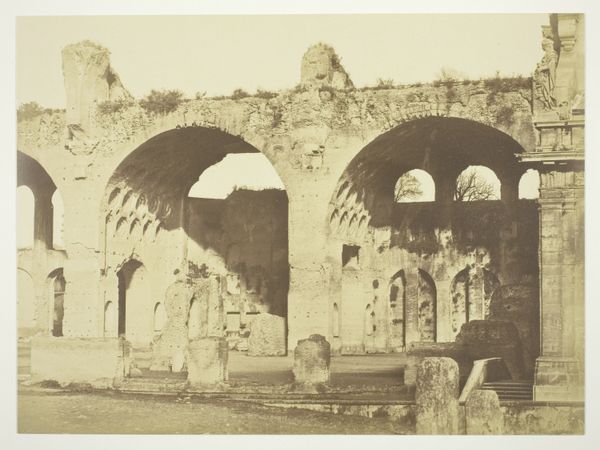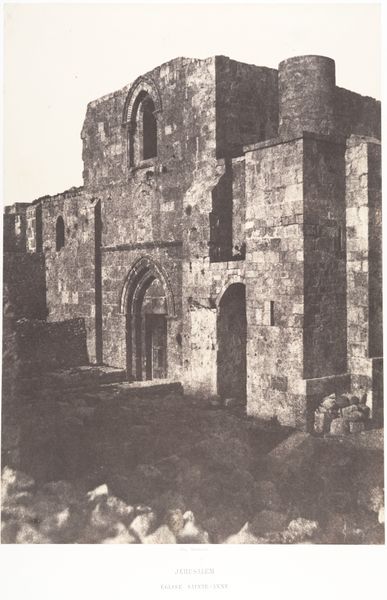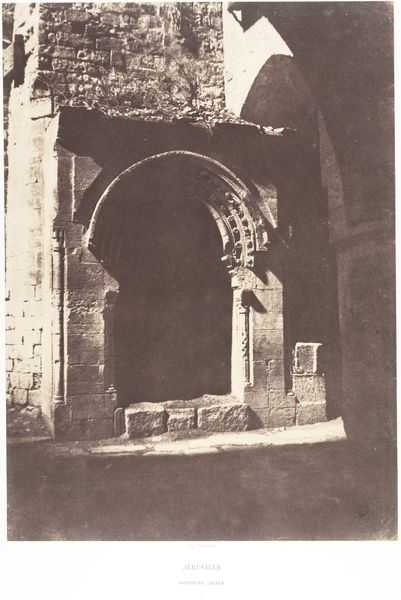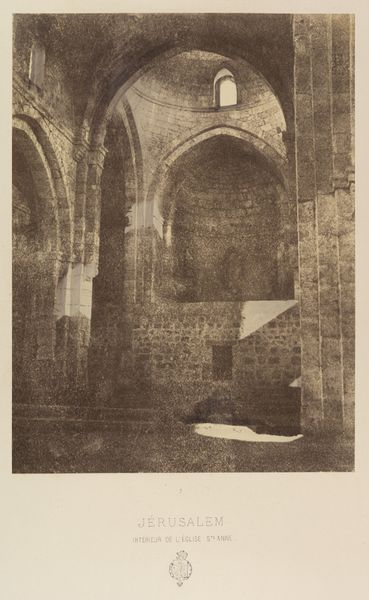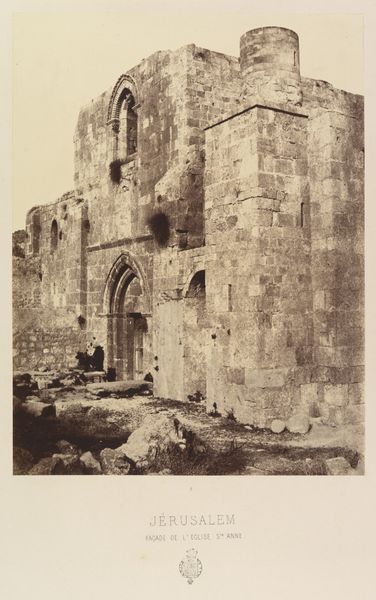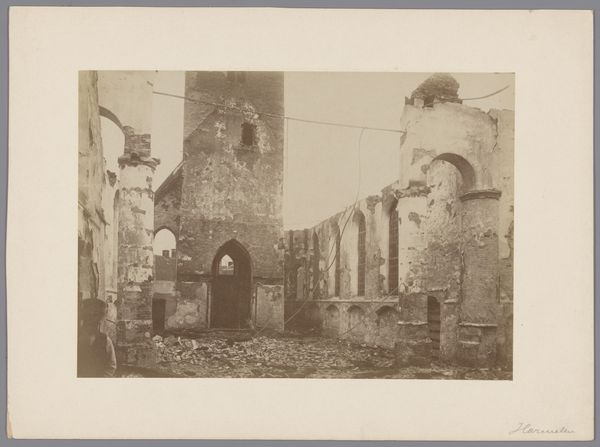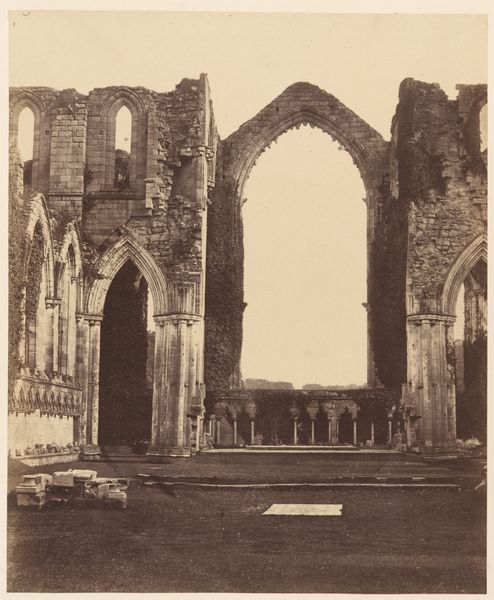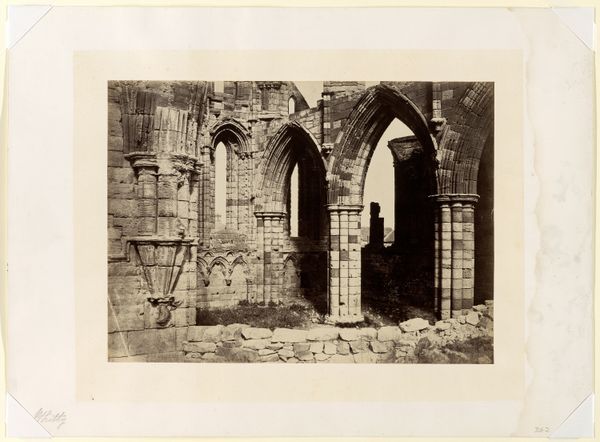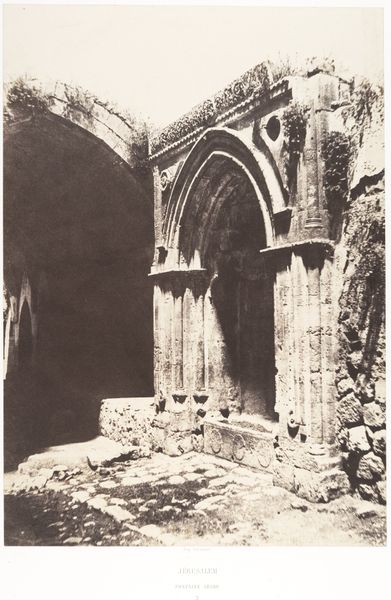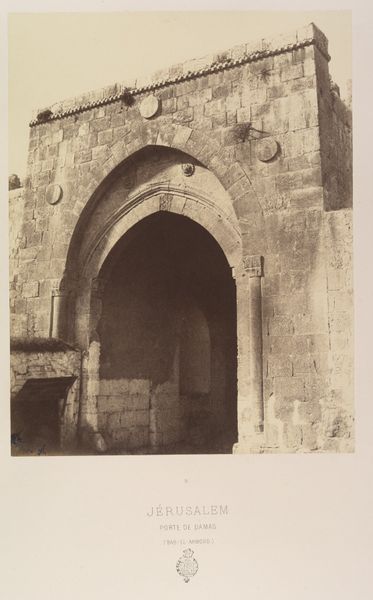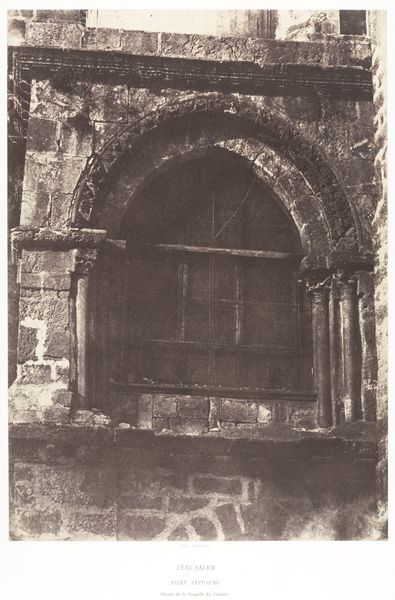
Dimensions: Image: 28.4 x 21.6 cm (11 3/16 x 8 1/2 in.) Mount: 43.9 x 30 cm (17 5/16 x 11 13/16 in.)
Copyright: Public Domain
Editor: Here we have Joseph Cundall's photograph "Bolton Priory, From the South," dating back to the 1850s. It's a gelatin-silver print. The crumbling architecture evokes a sense of time and decay. What strikes you about this piece? Curator: The tangible presence of labor. Each stone, each carefully constructed arch, represents countless hours of manual effort. And look at the ruins themselves – a material testament to social and political shifts that caused this priory’s decline. Think of the hands that quarried and shaped the stone versus the hands that perhaps dismantled or neglected it. Editor: So, you're saying the image isn't just about romantic decay, but also about the lives and labor embedded within the physical structure? Curator: Precisely. Consider also the materials themselves: stone, mortar, glass. Where did these originate? How were they transported? These seemingly simple elements speak volumes about trade, resource extraction, and the power structures of the time. Photography itself becomes a material process too – gelatin, silver, light. Each contributing to the construction of this image. Editor: I never really thought about photography having materials of its own. Curator: It is another step in the consumption and creation of material objects. We might also consider why Cundall chose this specific viewpoint, this framing. How does the act of photographing transform the already charged landscape? Editor: So it is more than ruins, but rather the culmination of social labor that constructed both the priory and photograph, all subject to decay and human control. I will never see a ruin the same way again. Curator: Indeed. It reveals the intertwined histories of creation, consumption, and representation through a lens of materiality.
Comments
No comments
Be the first to comment and join the conversation on the ultimate creative platform.
